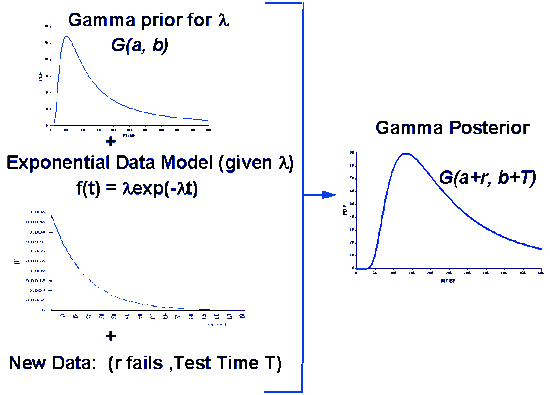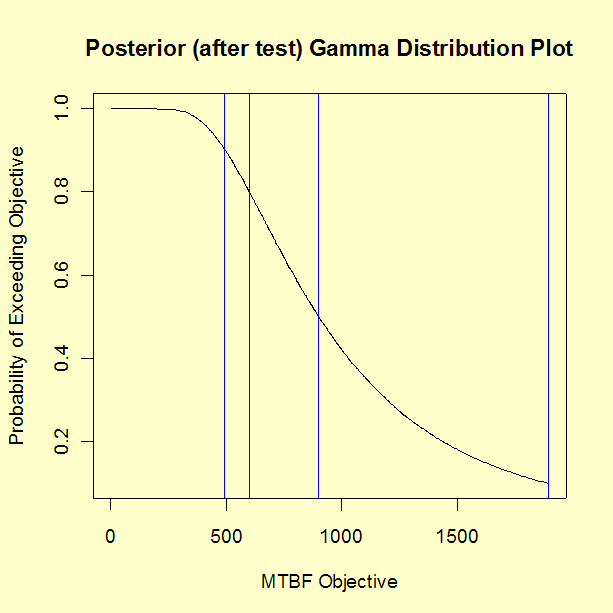8.4. Reliability Data Analysis
8.4.6. |
How do you estimate reliability using the Bayesian gamma prior model? |

A lower 80 % bound for the MTBF is obtained from $$ \frac{1}{G^{-1}(0.8, \, a', \, 1/b')} \, , $$ and, in general, a lower 100(1-\(\alpha\)) % lower bound is given by $$ \frac{1}{G^{-1}(1-\alpha, \, a', \, 1/b')} \, . $$ A two-sided 100(1-\(\alpha\)/2) % credibility interval for the MTBF is $$ \left[ \frac{1}{G^{-1}(1-\alpha/2, \, a', \, 1/b')} , \,\,\, \frac{1}{G^{-1}(\alpha/2, \, a', \, 1/b')} \right] \, . $$ Finally, the \(G(1/M, \, a', \, 1/b')\) calculates the probability that MTBF is greater than \(M\).
Example
The posterior gamma CDF has parameters \(a'\) = 4 and \(b'\) = 3309. The plot below shows CDF values on the \(y\)-axis, plotted against \(1/\lambda\) = MTBF, on the \(x\)-axis. By going from probability, on the \(y\)-axis, across to the curve and down to the MTBF, we can estimate any MTBF percentile point.

The MTBF values are shown below.
| \(1/G^{-1}(0.9, \, 4, \, 1/3309)\) | \(= 495\) hours |
| \(1/G^{-1}(0.8, \, 4, \, 1/3309)\) | \(= 600\) hours (as expected) |
| \(1/G^{-1}(0.5, \, 4, \, 1/3309)\) | \(= 901\) hours |
| \(1/G^{-1}(0.1, \, 4, \, 1/3309)\) | \(= 1897\) hours |
The test has confirmed a 600 hour MTBF at 80 % confidence, a 495 hour MTBF at 90 % confidence and (495, 1897) is a 90 % credibility interval for the MTBF. A single number (point) estimate for the system MTBF would be 901 hours. Alternatively, you might want to use the reciprocal of the mean of the posterior distribution \((b'/a')\) = 3309/4 = 827 hours as a single estimate. The reciprocal mean is more conservative, in this case it is a 57 % lower bound \((G(4/3309, \, 4, \, 1/3309))\).
The analyses in this section can can be implemented using R code.

